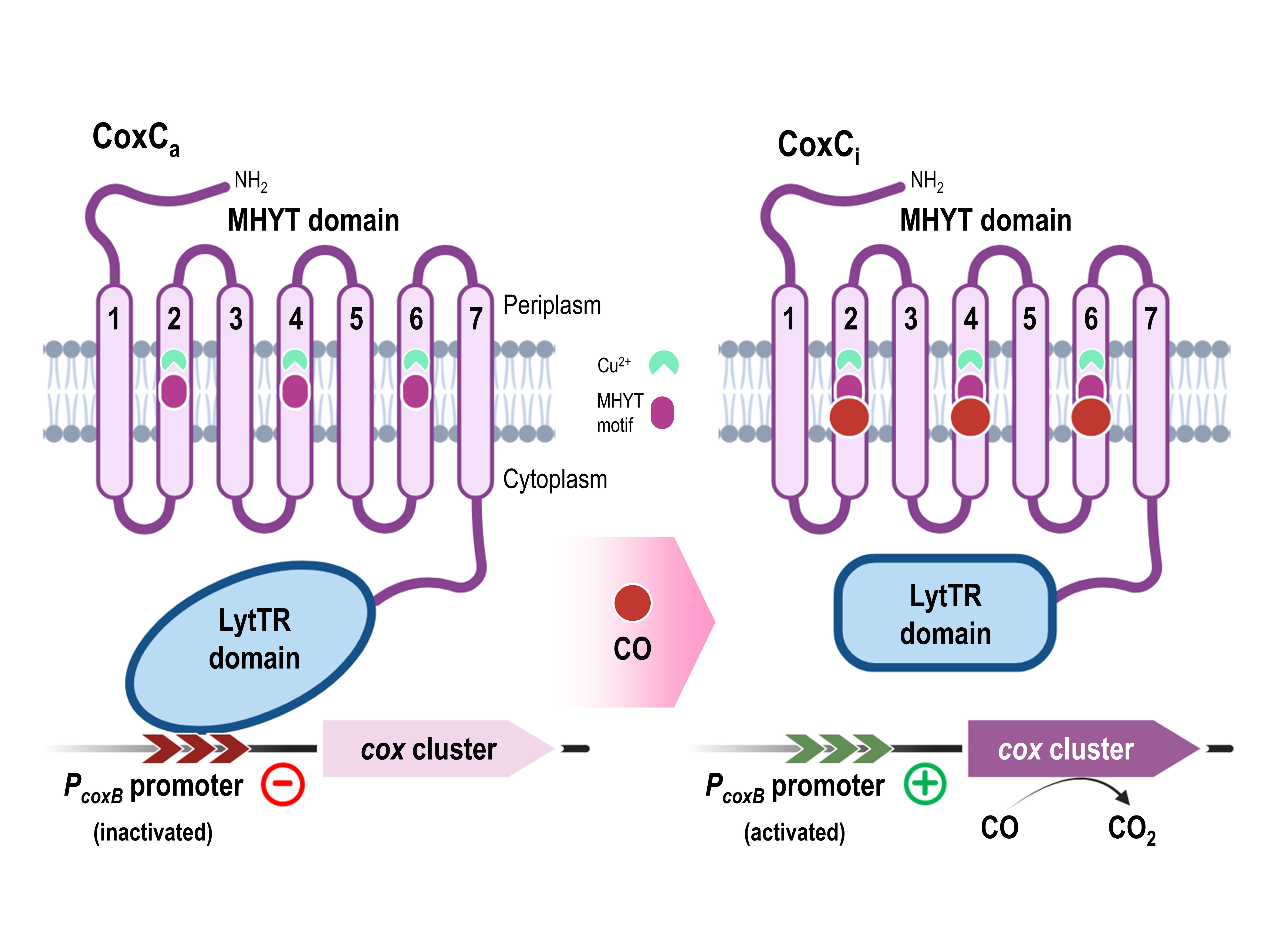
A study published in the journal Nucleic Acids Research by the Environmental Microbiology group led by Prof. Eduardo Díaz at the Margarita Salas Center for Biological Research (CSIC), presents the characterization of the MHYT protein domain belonging to the membrane transcriptional regulator CoxC of the bacterium Afipia carboxidovorans OM5, which stands out for its ability to oxidize and use the toxic gas carbon monoxide (CO) as the only source of carbon and energy under aerobic conditions.
The cox genes are responsible for CO oxidation and the CoxC protein plays a crucial role in its regulation. CoxC is the prototype of a new subfamily of single-component LytTR transcriptional regulators, characterized by the fusion of a DNA-binding LytTR domain that is allosterically regulated by a membrane MHYT domain. The MHYT protein domain, identified more than two decades ago and present in numerous membrane proteins of a wide variety of bacterial species and some fungi, has been postulated as a sensor of diatomic gases such as CO, oxygen (O₂) or nitric oxide (NO).
Durante-Rodriguez et al. have shown in this study that the C-terminal LytTR domain of CoxC binds to an operator box constituted by three direct 8-bp repeats in the PcoxB promoter of cox genes, acting as a specific repressor and thus preventing their expression. The MHYT domain of CoxC, located in the N-terminal region of the regulator, is constituted by three motifs located in three transmembrane segments and containing the conserved residues Met, His, and Tyr, which coordinate Cu2+ ions. Both in vivo, by de-repression assays of the PcoxB promoter in the presence of CO, and in vitro, by inhibition of the interaction of CoxC with the PcoxB probe, it has been corroborated that the MHYT domain of CoxC is essential for the detection of CO as an effector molecule.
The findings presented in this work represent a significant advance in the study of the previously unknown regulation of cox genes for aerobic CO metabolism, with important biotechnological implications for developing a new generation of biosensors of the toxic gas CO.
Reference: Characterization of a MHYT domain-coupled transcriptional regulator that responds to carbon monoxide. Gonzalo Durante-Rodríguez, Sofía de Francisco-Polanco, José Luis García and Eduardo Díaz (2024) Nucleic Acids Research, 1–12, https://doi.org/10.1093/nar/gkae575.

